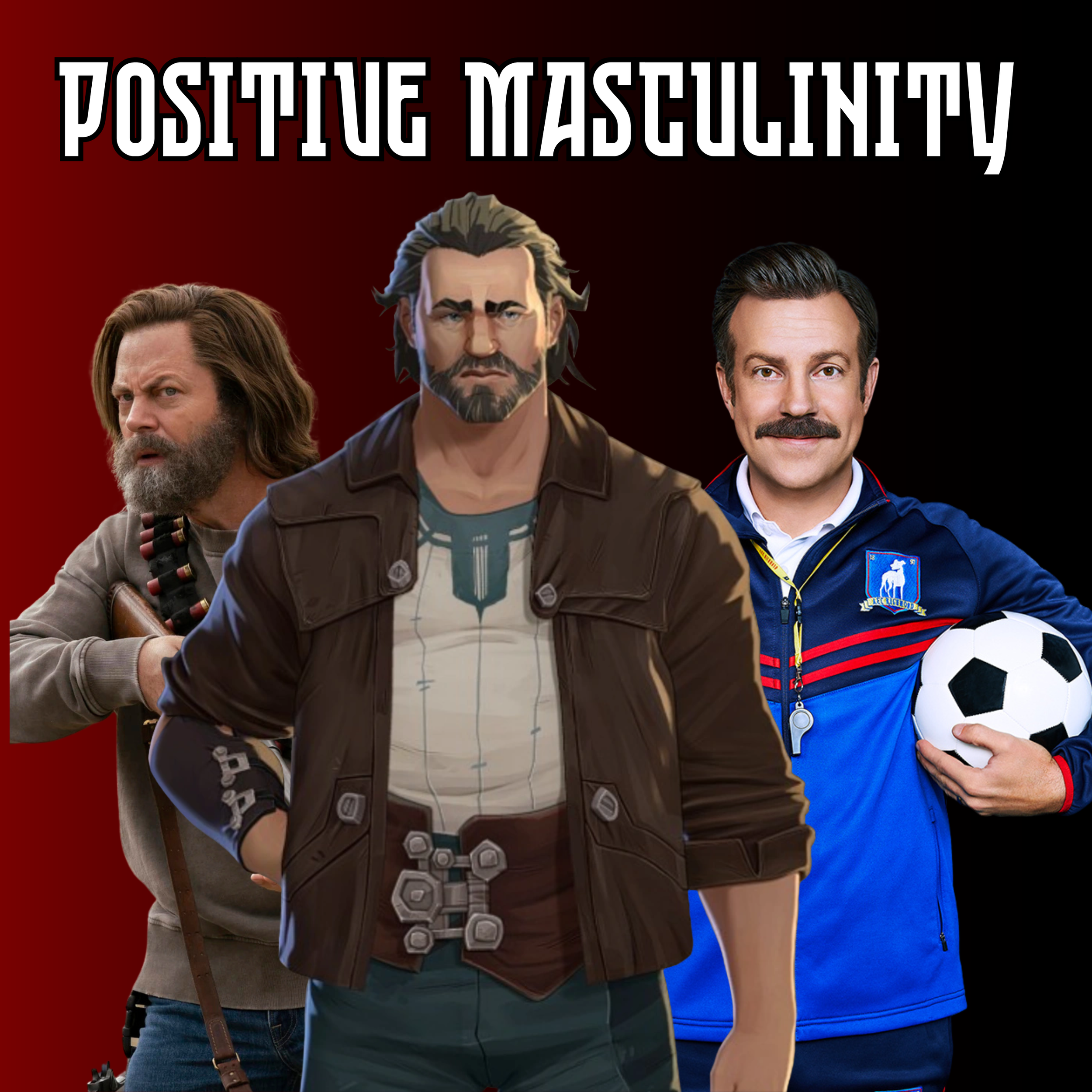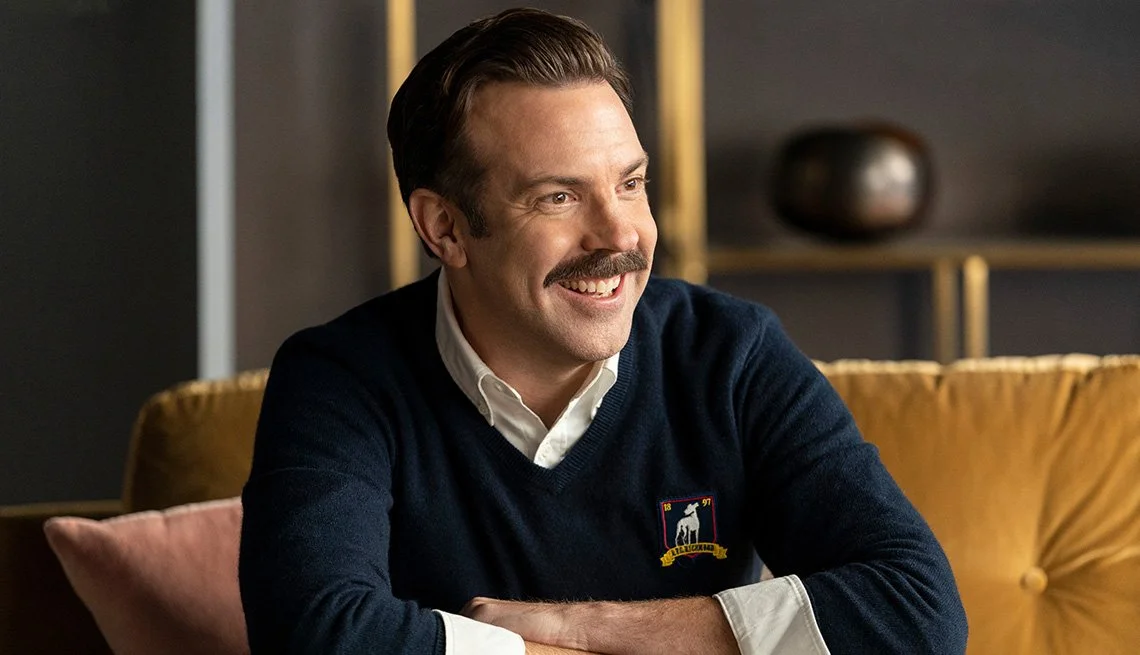Positive Masculinity in Modern Media
The way masculinity is portrayed on screen has changed over time. In the past, male characters in TV shows, cartoons, and video games were often shown as tough, controlling, and emotionally distant. These portrayals suggested that being a "real man" meant being stoic, unyielding, and physically dominant. However, these portrayals now seem limited and shallow compared to male characters who combine strength with kindness, show determination with compassion, and view vulnerability as a strength, not a weakness.
Recent shows like Arcane, HBO’s The Last of Us, and Ted Lasso provide great examples of this shift through their central male characters. Vander from Arcane is a father figure who cares deeply for his community and puts their needs above his own ambitions. In The Last of Us, Bill starts out as gruff and distant but reveals tenderness and protectiveness driven by love and responsibility. Ted Lasso, from the show of the same name, leads with optimism, empathy, and an understanding of human emotions. These characters show that positive masculinity can take many forms. They aren’t the stereotypical tough, unfeeling leaders. Instead, they prove that true strength comes from nurturing, listening, and supporting others emotionally.
In today’s essay, we’ll explore three key aspects of positive masculinity seen in Vander, Bill, and Ted Lasso: how they use power, their emotional maturity, and their confidence. By looking at these traits, we can better understand their personalities and the new ideas about masculinity they represent. Positive masculinity doesn’t reject traditional traits like strength or bravery. Instead, it reshapes them to focus on helping others and building positive relationships. It’s not about being weak or passive. It’s about using inner strength to create, listen, and understand rather than to destroy, dominate, or command.
So, without further ado, this is positive masculinity in modern media
Power
Power plays a big role in how masculinity is shown in stories. In the past, strong male characters were often seen as dominant and controlling by using violence or fear to get what they wanted. But characters like Vander, Bill, and Ted Lasso show a different kind of strength. They prove that real power isn’t about making others obey—it’s about protecting and helping people grow. Their strength isn’t about defeating enemies or taking control. Instead, it’s about lifting others up and creating a better community.
Take Vander, for example. He’s physically strong and was once a feared rebel fighter in the undercity. But when we meet him, he’s chosen a different path. Vander leads his community from his bar, The Last Drop, but not through fear or violence. He uses his power to keep peace and protect the children he’s taken in, like Vi and Powder. Vander’s strength is about standing up for those who can’t defend themselves. His decisions focus on safety and stability, not on gaining more power for himself. This shows that true strength is about helping others survive and thrive, not about dominating them.
Similarly, Bill shows a protective kind of strength. At first, Bill is a loner who doesn’t trust anyone and is focused only on his own survival. But his relationship with Frank changes him. Bill uses his traditionally masculine skills to create a safe and comfortable life for Frank, even in a world filled with danger. He builds defenses and provides for Frank’s needs, like good meals and moments of joy. Bill’s power isn’t about attacking others; it’s about keeping someone he loves safe. His strength isn’t a sword; it’s more like a shield he uses to protect the life they’ve built together. This shows that masculine power can come from love and responsibility, not just toughness.
Then there’s Ted Lasso, whose strength comes from his emotional intelligence and kindness. Ted doesn’t rely on physical force or intimidation to lead. Instead, he connects with people, helps them grow, and brings out their best qualities. Ted inspires others with his optimism and belief in their potential. His power lies in uniting people and building a sense of teamwork and trust. This kind of leadership shows that strength can come from understanding and supporting others, not just from being the loudest or the toughest.
In all three cases, these men show that real strength isn’t about controlling others. Vander protects his community, Bill creates a safe space for his partner, and Ted motivates people to be their best. Their power helps others feel safe, supported, and valued. This is very different from toxic masculinity, which uses power to dominate or intimidate. Instead, Vander, Bill, and Ted show positive masculinity, where strength is used to protect and encourage.
This kind of masculinity challenges old ideas about what it means to be strong. It shows that the strongest men might be the ones who choose empathy, care, and community over selfish goals. By looking at characters like Vander, Bill, and Ted, we can see that masculinity doesn’t have to mean being controlling or aggressive. Instead, it can mean putting others first, creating peace, and helping others succeed.
Emotional Maturity
Being vulnerable isn’t a weakness; it’s a way to grow and connect with others. Accepting emotions can lead to stronger relationships, healthier communities, and more fulfilling lives. Emotional maturity is a strength that builds trust, respect, and understanding. Vander, Bill, and Ted show that this version of masculinity is not only healthier but also more powerful and meaningful.
These men grow as individuals not by ignoring their feelings but by facing their fears and insecurities. Vander’s regrets about his violent past help him become a peaceful leader. Bill’s decision to love Frank gives his life purpose. Ted’s openness about his struggles allows him to lead with confidence. Their emotional maturity doesn’t detract from their masculinity but helps them navigate the difficult challenges life throws at them.
Ted Lasso, for example, is emotionally mature from the start. He is kind, funny, and open about his feelings. Ted talks about his struggles and listens to others when they’re facing challenges. He even seeks therapy to manage his stress and panic attacks, showing us, the viewers, that asking for help is a sign of strength, not weakness. Ted’s ability to understand and express emotions helps him connect with others and lead his team effectively. He shows that true masculinity includes caring for mental health and supporting others.
Bill, on the other hand, goes through a big emotional transformation. At first, he is a closed-off survivor who avoids relationships because he sees them as weaknesses. But when he meets Frank, everything changes. Bill allows himself to care for someone else, and this brings meaning to his life. He shows love by preparing meals, creating a safe home, and expressing affection. Even in a dangerous, post-apocalyptic world, Bill’s vulnerability gives him strength and happiness. His story proves that masculinity can include love and care without losing independence or toughness.
Vander as well is an incredible father figure who shows great emotional depth. He openly expresses his concerns and regrets, especially about his past actions, not just to his friends but also his daughters in an effort to teach them from his mistakes. Instead of hiding his feelings, Vander talks about the challenges he faces and comforts the children he protects. He shows them that emotions aren’t weaknesses but tools to help make better choices. By showing vulnerability, Vander builds stronger connections with the people around him, which makes him a better leader and protector.
Emotional maturity means to be able to understand, manage, and share emotions in a healthy way. Traditional ideas about masculinity often discourage men from showing emotions like sadness or fear, but characters like Vander, Bill, and Ted Lasso show a different perspective. They demonstrate that sharing emotions can actually make men stronger, more relatable, and better leaders.
Confidence
Confidence is an important trait that is traditionally connected to masculinity, but the way it is shown matters. Traditional ideas of confidence in men can sometimes focus on arrogance, where a man feels the need to prove he is better than others. Positive masculinity, however, redefines confidence as inner strength and self-awareness. This kind of confidence doesn’t need to put others down or act superior. Instead, it comes from knowing yourself, understanding your values, and using your strengths to help others.
In Arcane, Vander’s confidence isn’t about showing off his strength or scaring his enemies. Instead, his confidence comes from his strong sense of purpose and his values. Vander believes in keeping his family and community safe, and that belief gives him strength. He doesn’t need to pick fights to prove his worth or act aggressively to gain respect. Instead, Vander’s calm and steady leadership makes people trust him. He shows that confidence is not just about what you do, but also about what you choose not to do—like avoiding pointless fights. His quiet strength teaches that real confidence comes from standing firm in your beliefs and being someone others can rely on.
On the other hand, Bill starts out with a different kind of confidence. At first, he only trusts himself and relies on his ability to survive alone. His confidence is built on being tough, independent, and ready to outsmart any threat. But this confidence comes from a place of fear and loneliness. When Bill meets Frank, everything changes. He learns to trust not only his survival skills but also his ability to care for someone else. Bill’s confidence grows as he builds a safe and loving home for Frank. Instead of just surviving, Bill creates comfort and happiness in a dangerous world. His confidence becomes softer and more meaningful because it’s rooted in love and trust. This shows that confidence doesn’t always mean being tough; it can also come from providing safety and support for the people you care about.
But Ted is by far the perfect example of positive confidence. When Ted starts coaching football—or soccer if you’re a heathen—he knows he isn’t an expert on this sport. But this doesn’t make him doubt himself. Instead, Ted focuses on his strengths—his ability to encourage people, build relationships, and create a positive team environment. Ted’s confidence comes from his belief that he can help others improve, even if he isn’t the most knowledgeable person in the room. He doesn’t need to act like he knows everything or tear others down to feel strong. By combining confidence with humility, Ted shows that real strength comes from supporting others, not competing with them.
Vander, Bill, and Ted Lasso all challenge the idea that confident men need to dominate others to prove themselves. Instead, their confidence comes from having a clear purpose and valuing relationships. Vander’s confidence is grounded in his moral values and sense of responsibility. Bill’s confidence grows when he opens his heart and creates a home for Frank. Ted’s confidence shines through his kindness, support, and belief in others. These examples show that confidence isn’t about winning at someone else’s expense. Instead, it grows stronger when it helps others succeed.
Conclusion
By celebrating characters like Vander, Bill, and Ted, we can start more conversations about how masculinity can grow and change. These stories show that men can be strong but kind, firm but compassionate, and confident without being arrogant. True masculinity isn’t about overpowering others—it’s about supporting, uplifting, and inspiring them. These role models offer a vision of manhood that is healthier, more inclusive, and better for everyone.
It’s important for storytellers to keep showing male characters like this, especially for younger men. These examples teach that being a "real man" doesn’t mean using violence or avoiding emotions. Instead, real strength comes from empathy, protecting others, and being honest about your feelings. These lessons can help create healthier relationships and promote a more positive idea of what it means to be a man.
And that’s it. Positive masculinity in modern media. I hope you enjoyed this essay. Let me know what you think in the comments below. Don’t forget to like and subscribe. Until next time. Salam!





